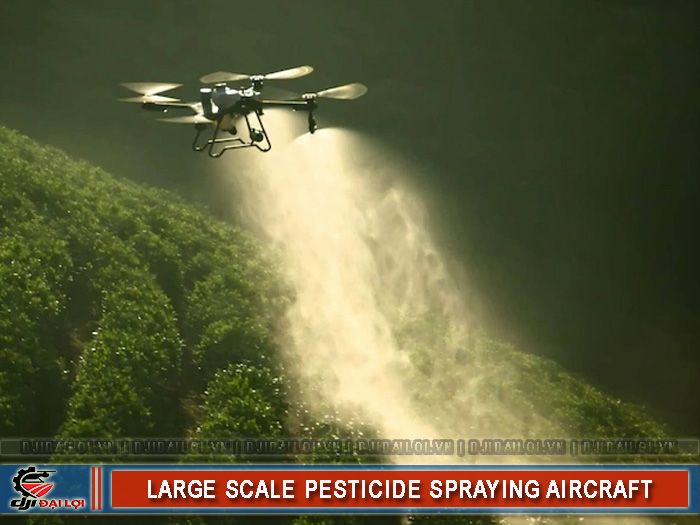
The rise of crop-spraying drones marks a new era in Vietnamese agriculture. Instead of low-efficiency manual spraying, farmers now embrace automation to save costs and ensure safety. Using drones boosts spraying efficiency by 5–10 times while reducing chemical exposure risks by up to 90%.
Field surveys show drones can spray 20–30 hectares per day, depending on terrain, whereas manual labor covers only 2–3 hectares. Fine mist systems ensure uniform coverage and reduce chemical use by 20–25% compared to traditional methods. Remote operation and GPS automation also lower labor costs significantly.
Drone spraying performance is generally measured by:
Flat terrains allow stable drone flight and uniform coverage. However, efficiency can drop 10–15% on sloped or windy fields. Adjusting flight altitude, speed, and spray volume according to manufacturer recommendations helps maintain consistent results.
|
Criteria |
Crop-spraying drone |
Manual labor |
|---|---|---|
|
Productivity |
20–30 ha/day |
2–3 ha/day |
|
Chemical consumption |
20–25% lower |
Normal |
|
Coverage accuracy |
High (GPS-guided) |
Low, manual variation |
|
Worker safety |
No chemical exposure |
High risk of poisoning |
→ Overall, drones are 10 times more efficient than manual spraying, saving time, cost, and reducing health risks for farmers.
Advanced models like DJI T40 use dual radar to detect obstacles in real time, preventing collisions around tall crops or power lines. Ultrasonic sensors measure altitude precisely, ensuring stable spraying height and minimizing chemical waste.
Most crop-spraying drones feature RTK GPS positioning, allowing precise mapping down to each square meter. Operators can program autonomous routes - the drone takes off, sprays, and lands automatically. This increases operational efficiency by 25–30% while reducing human error.
Drones typically carry 15–40 liters of liquid. Each 10–15 minute flight can cover 1–2 hectares. The optimal speed range of 5–7 m/s ensures even droplet distribution without wind drift. Farmers should balance tank size, battery weight, and field area when selecting models.
Hiring drone spraying services costs about 150,000–180,000 VND per hectare, roughly 30% cheaper than manual spraying (220,000–250,000 VND/ha). Drones can also work 8–10 hours daily without fatigue or weather limitations.
A DJI Agras T40 costs around 250–300 million VND. When spraying 500 hectares annually, after deducting battery and maintenance costs, profits can reach 150–200 million VND/year - meaning ROI within 1.5–2 years, especially when offering spraying services to multiple farms.
→ Regular maintenance extends drone lifespan and reduces mid-season breakdown risks.
In Đồng Tháp, trials with the DJI T40 achieved 12 hectares/hour at 95% coverage efficiency. Spraying uniformity improved significantly, cutting pesticide use by 20% compared to traditional sprayers.
Farmers reported 25–30% cost reduction and 10x faster spraying speed. They also emphasized the improved safety and convenience of drone spraying versus manual labor.
→ Manufacturers are addressing these challenges with fast-charging batteries and AI-assisted flight systems for greater reliability.
Known for strong performance, durability, and precision. The T50, with a 40L tank and 4D radar, achieves up to 20 hectares/hour under ideal conditions.
|
Criteria |
DJI Agras T40 |
XAG P200 |
|---|---|---|
|
Tank capacity |
40 L |
50 L |
|
Radar system |
4D obstacle avoidance |
Dual radar + LiDAR |
|
Flight stability |
High, effective wind compensation |
Very high, auto-balancing |
|
Average price |
~300 million VND |
~350 million VND |
→ Both deliver exceptional performance, but DJI holds an advantage in availability and maintenance support within Vietnam.
While less powerful (15–20L tanks), Vietnamese-made drones are cheaper, easier to repair, and well-suited for smaller farms with complex terrains - making them a practical choice for cooperatives and smallholders exploring drone technology.
Crop-spraying drones demonstrate superior efficiency, precision, and cost savings. Their widespread adoption marks a major step toward agricultural modernization in Vietnam.
→ Choosing the right crop-spraying drone model ensures maximum efficiency and cost-effectiveness.
The combination of smart sensors, radar technology, and automated control proves that crop-spraying drones are a strategic, high-return solution for large-scale farming in the near future.
Yes. Operators must complete training and obtain certification for agricultural drone control in compliance with civil aviation safety regulations.
Yes, but operators should adjust flight speed and spray volume. Some models are equipped with wind sensors and waterproof radar, but avoid heavy rain to maintain coverage accuracy.
Typically 500–800 charge cycles, depending on quality and usage. Proper storage, avoiding overheating, and balanced charging cycles extend battery lifespan and flight stability.
They’re compatible with most liquid pesticides, including biological solutions. Avoid thick or particle-heavy mixtures that could clog nozzles.
For farms under 10 hectares, choose 15–20L models like the DJI T20P or local 18L drones - affordable, easy to maintain, and efficient for small-scale spraying.